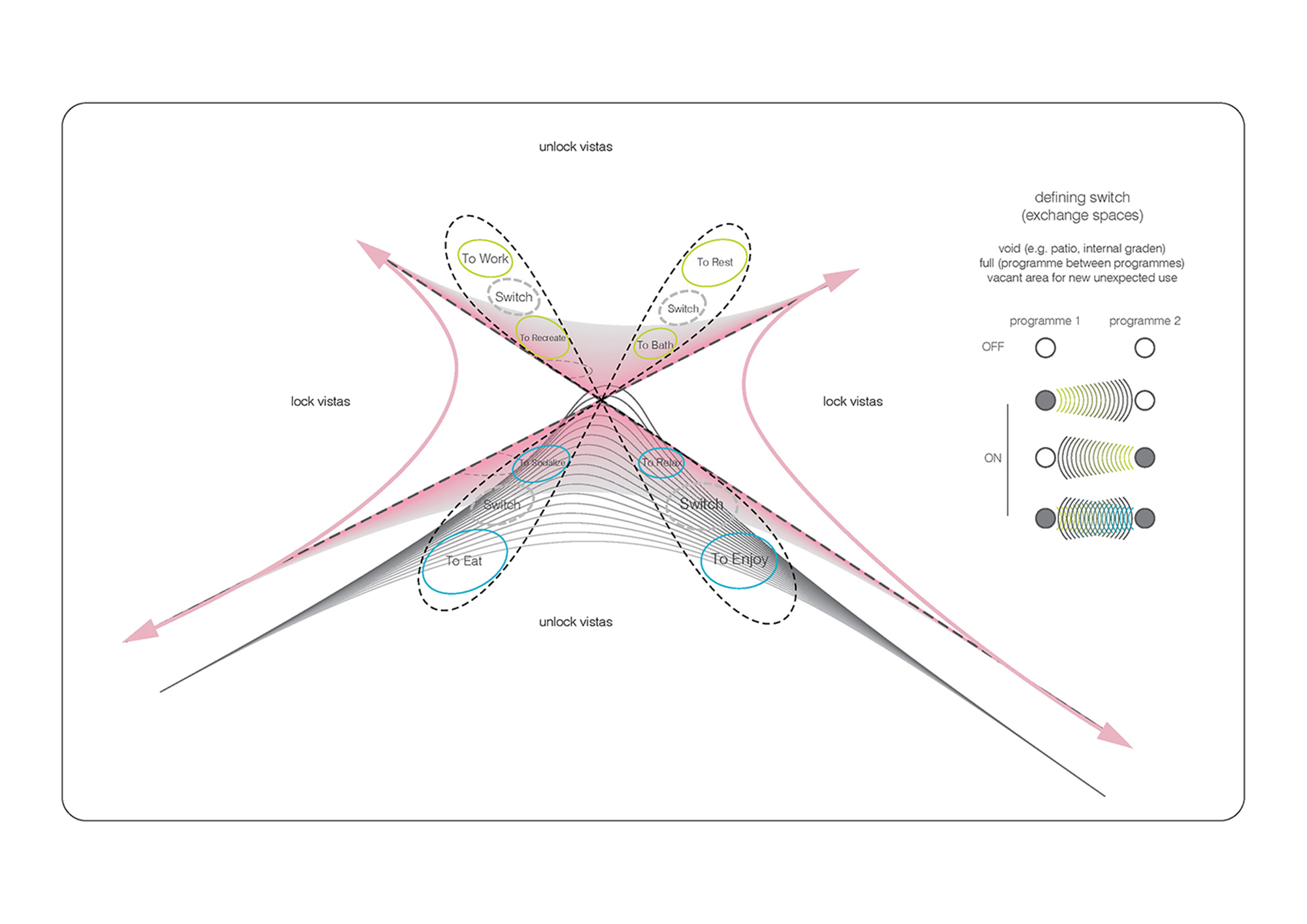Sustainable, comfortable, spacious and high-tech, the W.I.N.D. House in North Holland, Netherlands was completed in 2014 and was sketched out by a firm named UNStudio. It offers 5,683 square feet of living space and impresses with a comprehensive home automation system that provides integrated control of various facilities such as mechanical systems, solar panels, and electrical systems.
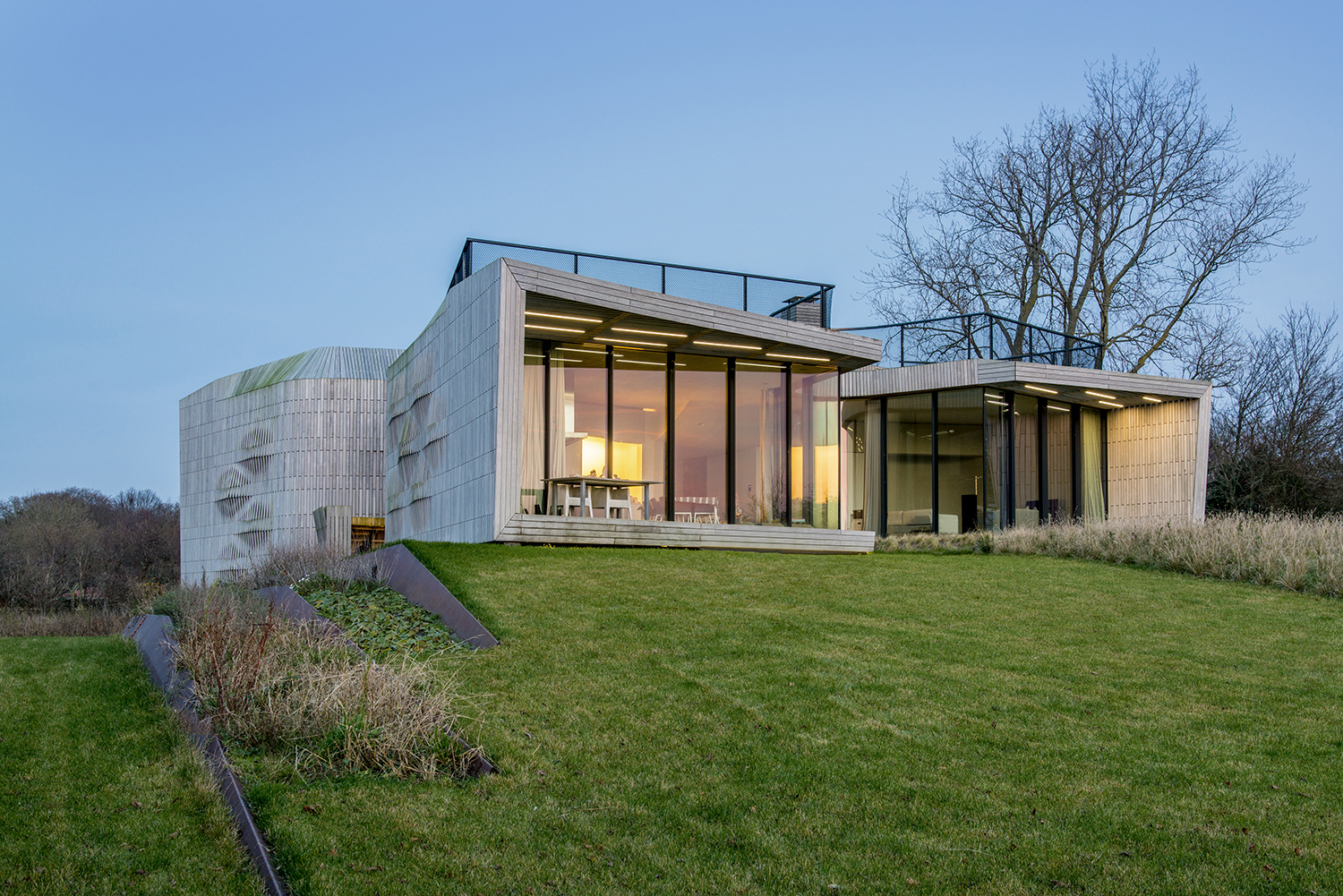
The “smart house” can be controlled using a primary touch screen panel found within the living room. Furthermore, a series of decentralized devices allow the residents to control each room individually. There’s also the possibility to access the home’s controls with the help of external devices that are connected via LAN. In order to make sure that the abode would be cool during the summer and warm during the winter, the architects implemented a special air/water heat pump. The back and front facades flaunt coated glazing as well as tinted glass that filters sunlight.
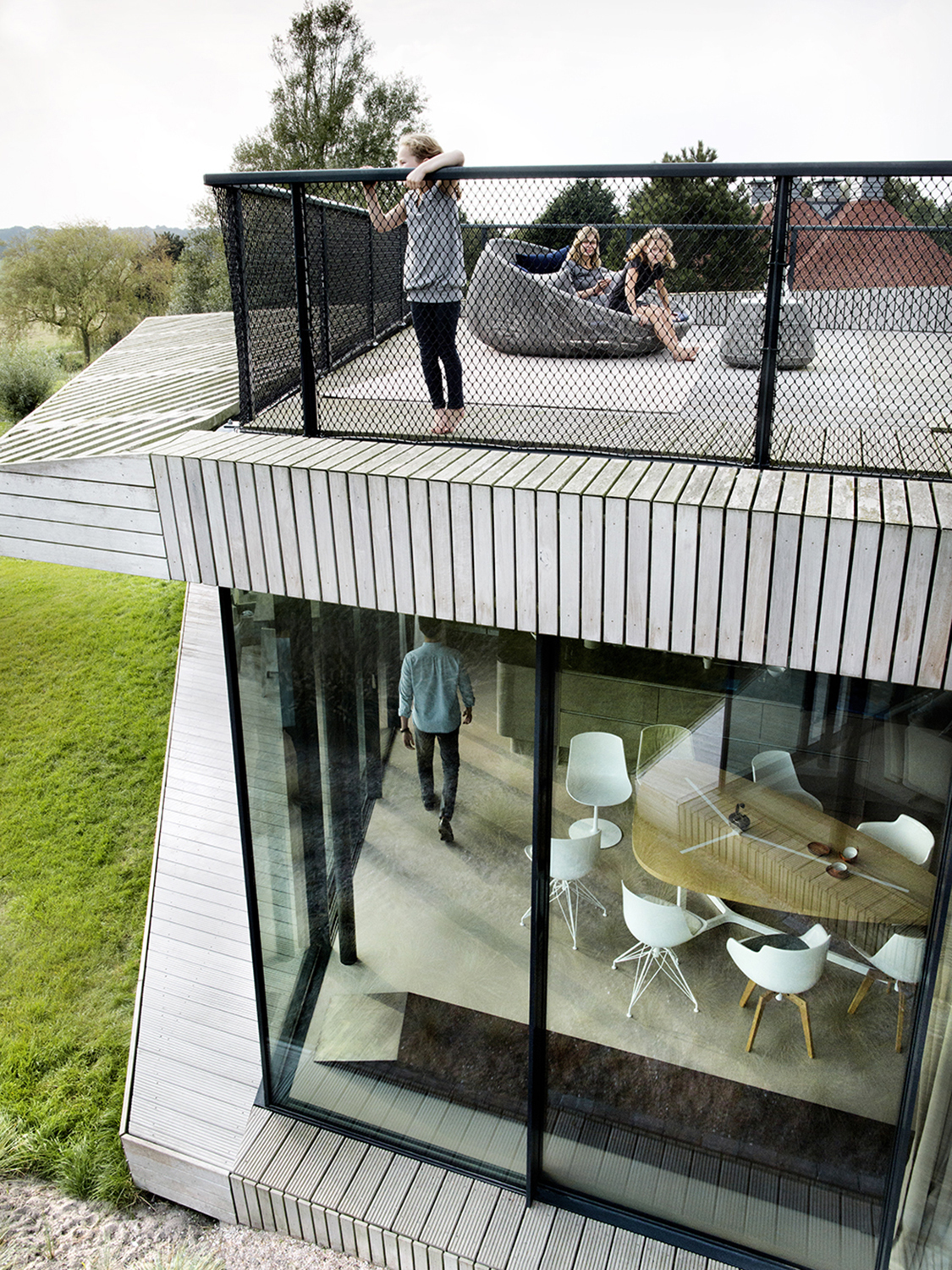
The layout itself is based on the shape of a flower and includes four facades as well as four different wings. The first level of the W.I.N.D. House comprises the open plan living areas such as the kitchen, dining area and living room. There’s also a garden in front of the wings that slopes upwards into a series of terraces.
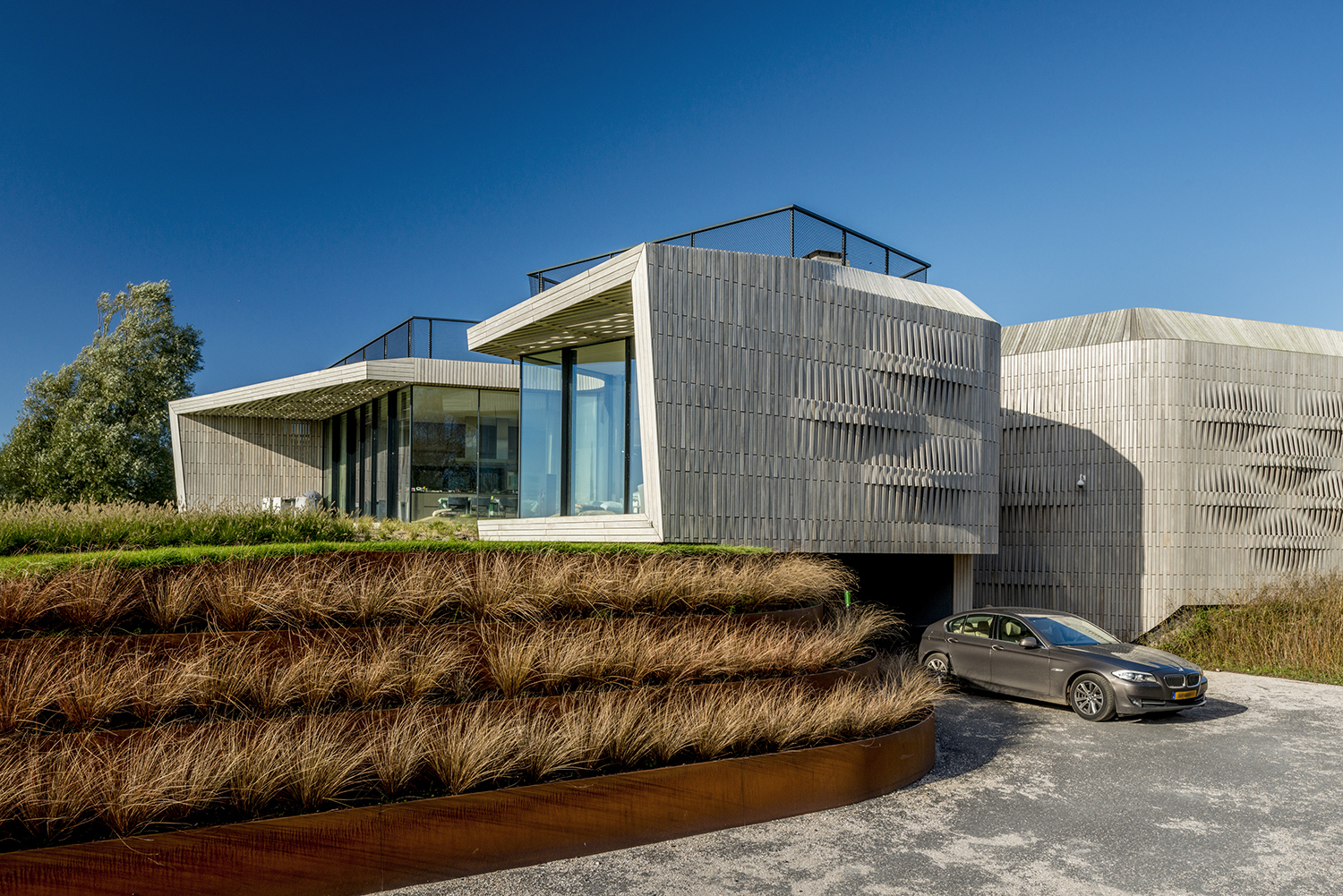
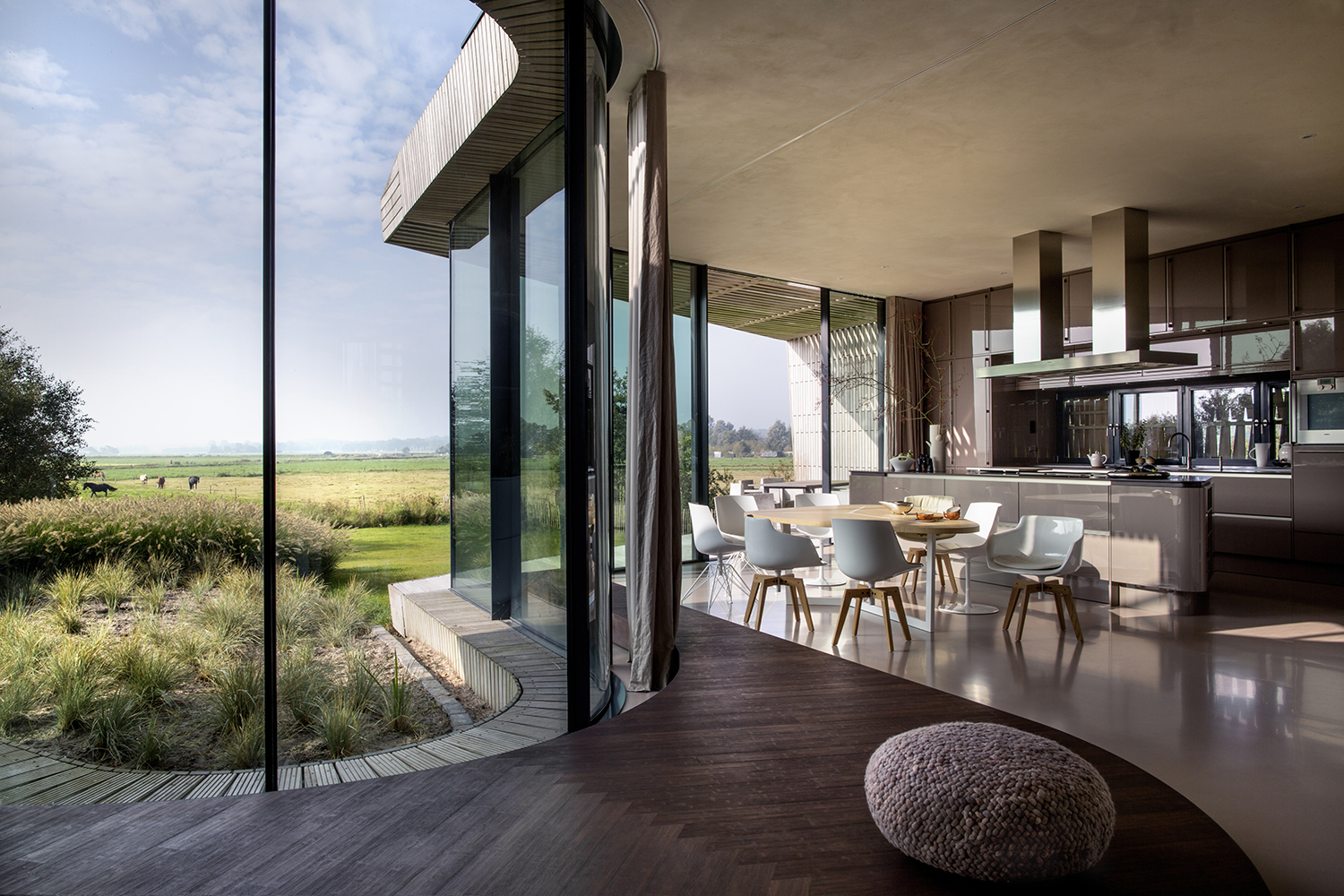
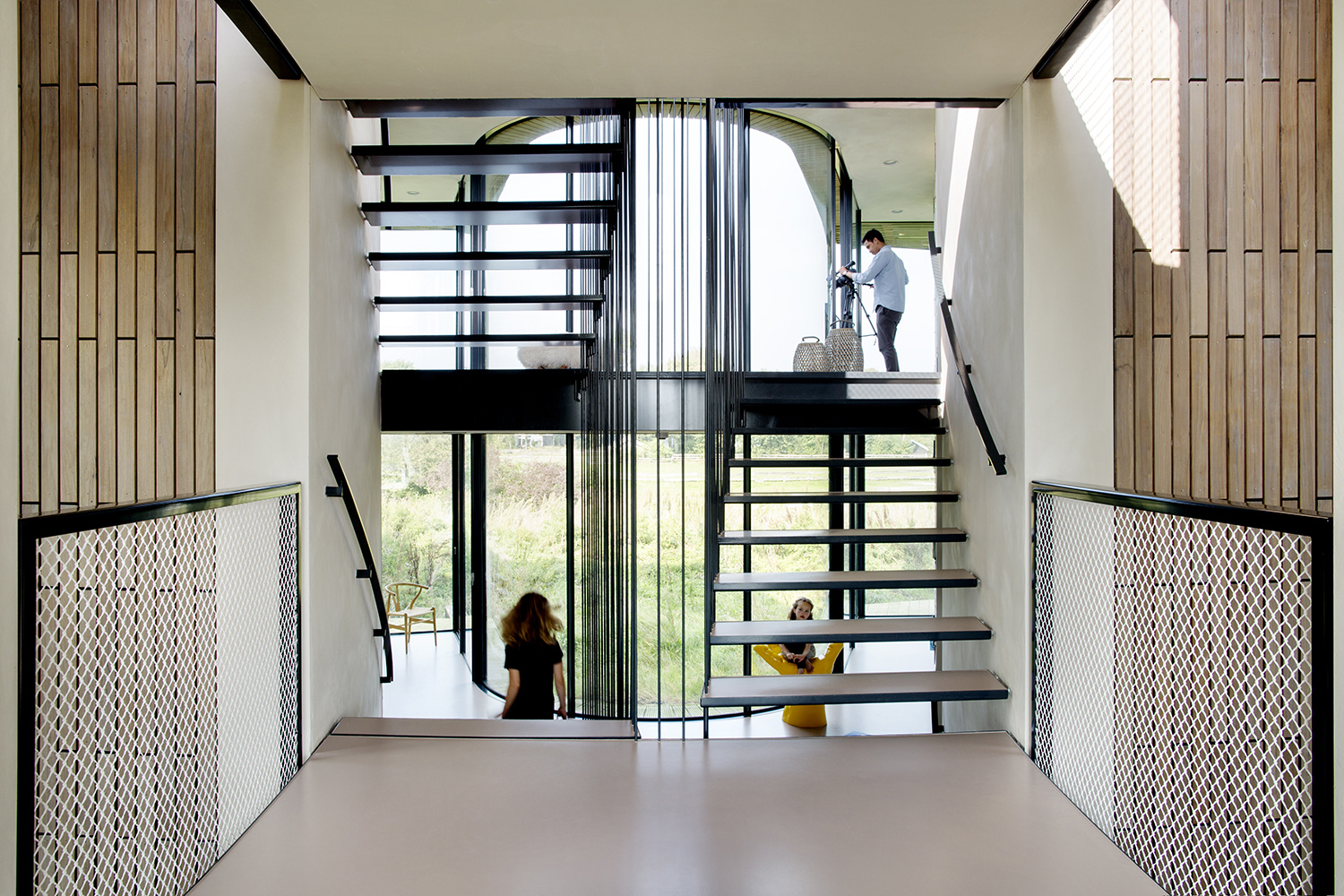
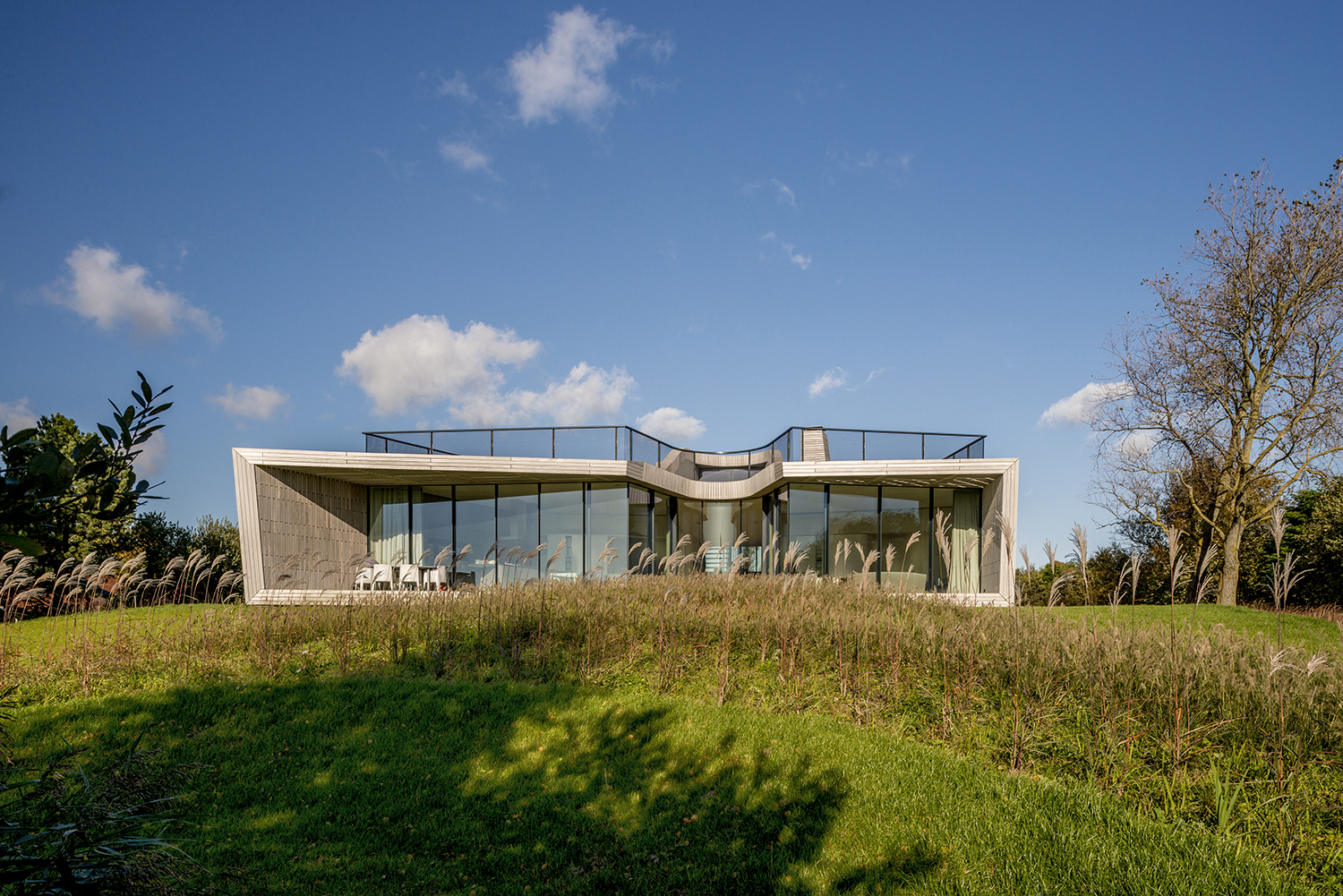
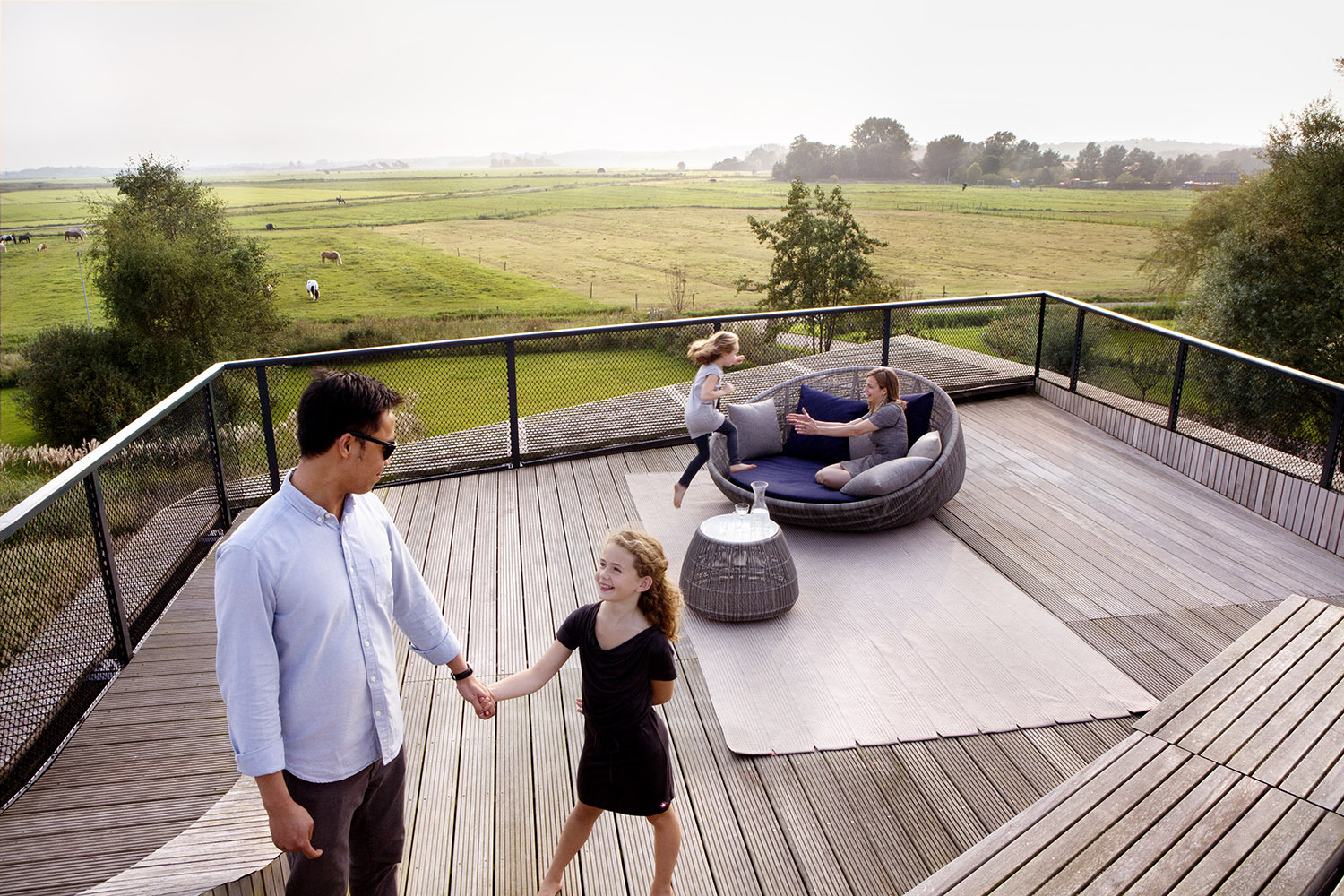
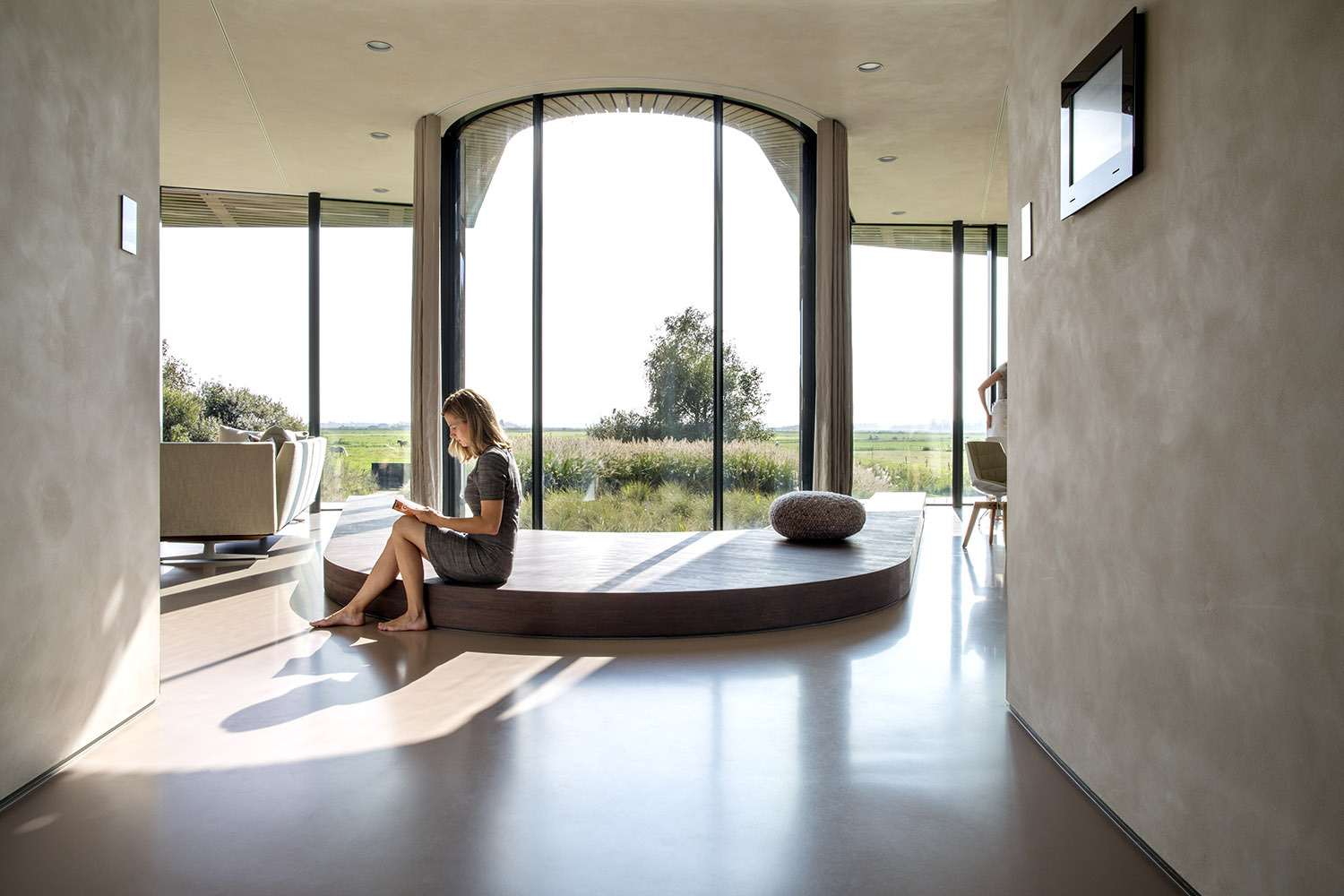
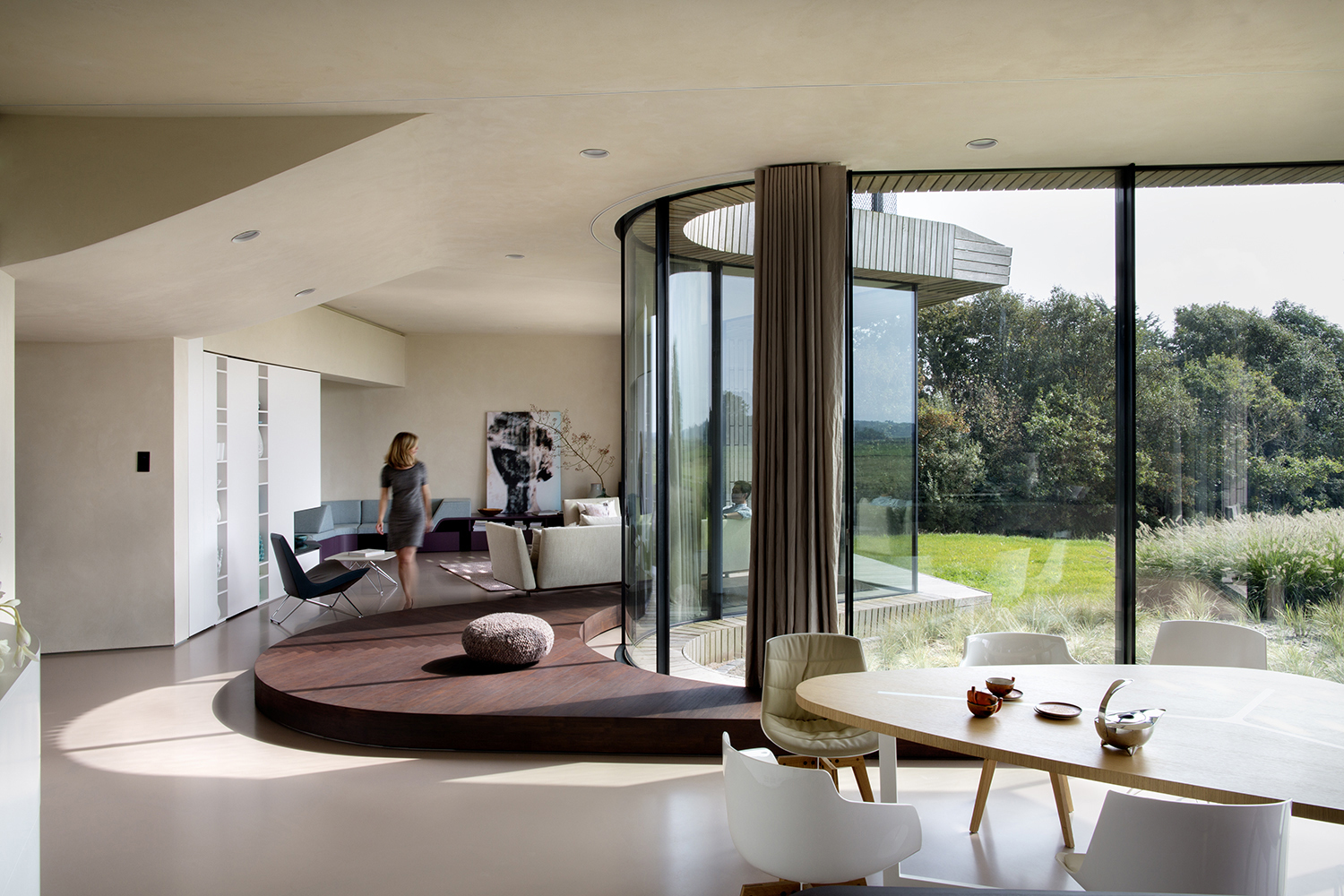
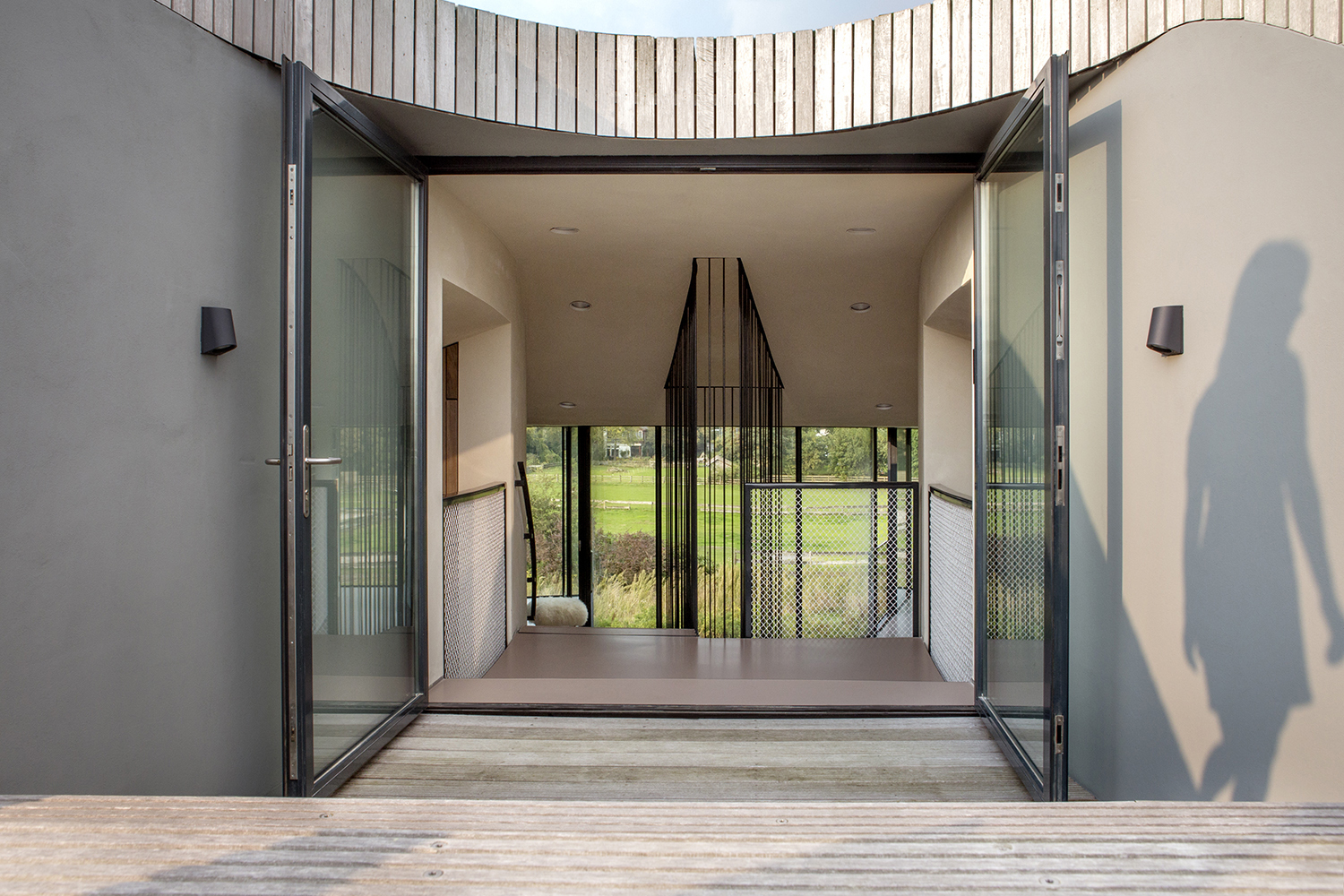
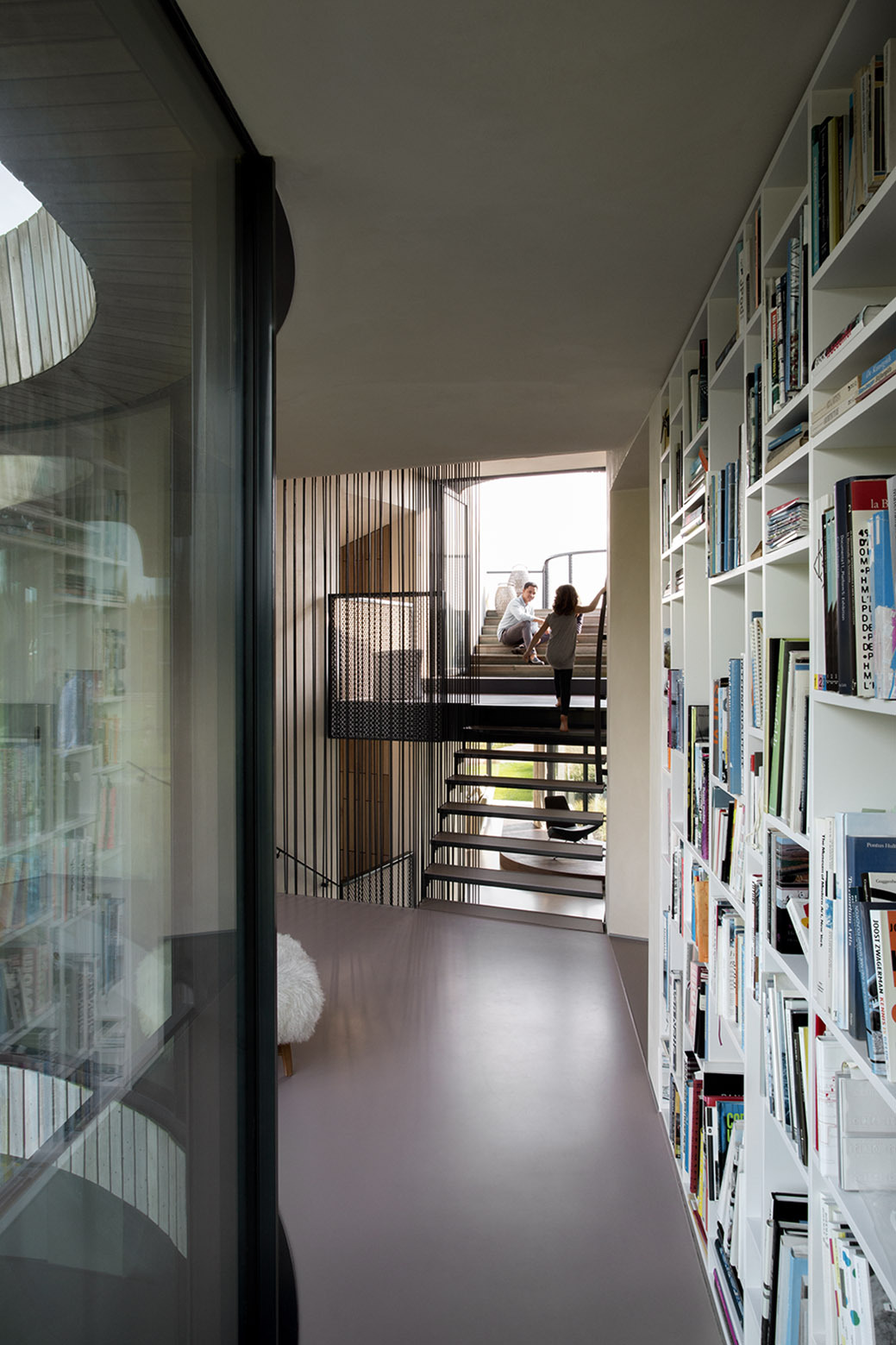
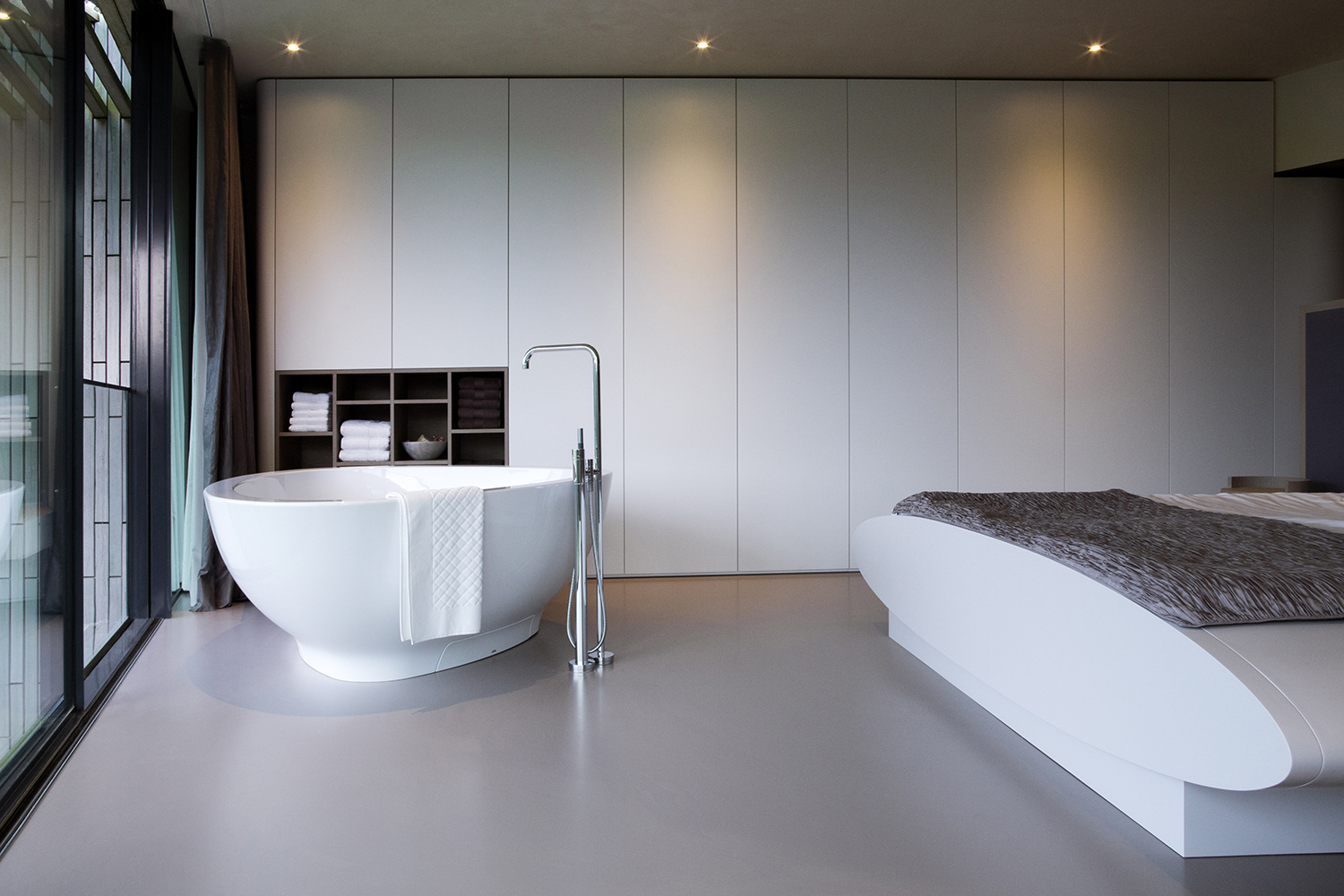
From the architect:
Super Living – the expansion of the smart home
The ‘homes of the future’, previously the stuff of fantasy exhibited only in World’s Fairs and science fiction, are increasingly becoming a reality. Automation and connectivity are making it possible for today’s smart homes to integrate information technologies through which systems and appliances are able to communicate in an integrated way, resulting in vastly increased convenience, energy efficiency, safety and security.
As such, flexible floor plans are incorporated which allow for diversity in function in order to correspond to the family’s changing needs and thus offer choice for gathering, seclusion, work or play. The organisation of the contemporary home therefore enables the residents to curate their own home life, both now and in the future.
The W.I.N.D. House in the province of North-Holland incorporates both integrated sustainable solutions and home automation, whilst flexibility of spaces, the comprehensive assimilation of the surrounding landscape and a centrifugal circulation form the basis of the design.
The W.I.N.D. House, North-Holland, Netherlands, 2008 – 2014
Located on the outskirts of a Dutch village and close to the sea, the W.I.N.D. House is backed by a sheltered wooded area and fronted by a large, open expanse of polder landscape. The design of the house responds to both its setting and to the seasons, whilst regulating and maximising upon the effects of these.
Assimilating the landscape
The organisation of the house is defined by its external conditions. The more intimate working and sleeping areas are located towards the back, where the enclosure of the nearby woods provides an intimate, private setting, while the living areas enjoy expansive and panoramic views of the polder landscape to the front.
Both the front and rear of the house are fully glazed and as such connect the two differing outside conditions with the interior. Exterior canopies and side walls further strengthen this connection by framing the view towards the landscape and providing sheltered outside terraces. These side walls are predominantly closed and therefore additionally serve to provide privacy from the neighbouring buildings on either side.
The elevated position of the open plan living areas (kitchen / dining / living) on the first floor further enhances the views to the exterior. The garden area in front of the wings slopes gently up towards the terraces, creating the impression of a continuation of the polder landscape directly into the house.
Suggesting the shape of a simple flower, each of the four facades curve towards the inside to create four distinct petal-like wings and to draw the landscape further into the interior. These curving recesses are visually connected to each other through their view lines, which cross at the heart of the building and provide varied diagonal vistas throughout the building. At the front and back the recesses strengthen the inside-outside connection by providing cross views between the wings.
Centrifugal circulation
The vertical organisation of the building follows a centrifugal split-level principle. An open staircase at the centre of the house – which forms the circulation core between the four recesses – connects the front and back wings, with the result that each turn on the stair provides expansive vistas through the house and out towards the surrounding landscape.
The entrance level houses basement functions and the carport, which is situated next to the main entrance. From the main entrance the central staircase leads towards the children rooms and the music room on the first floor to the rear of the house. From here it proceeds up to the raised first level at the front of the house, where the main living area and kitchen are located.
From the living areas the staircase leads up to the second level at the rear of the house, where the Master bedroom with hamam and the guest room are located, before ascending further up to the generous roof terrace which covers the complete two front wings of the house and overlooks the polder landscape.
Automation and energy management
A comprehensive home automation system enables integrated control of the electrical systems including solar panels and mechanical installations. Complete control of this ‘smart home’ is possible by a central touch-screen in the living area, while decentral devices provide dedicated control per room. Furthermore control is possible remotely by independent devices via LAN-connection.
Energy from the sun is harvested by solar panels located on the roof at the back of the house. In addition the integrated sustainability concept of the house consists of a central air/water heat pump for heating and cooling and mechanical ventilation with waste heat recovery. The heat pump provides warmth in the winter and cooling during the summer. Distribution is provided by floor heating and cooling with individual control for each room.
Heat gain is reduced through the use of tinted glass on the fully glazed front and back facades. This coated glazing further enables natural light to flood the interior spaces, whilst increasing privacy during daytime. The walls and ceilings of the house are clad with natural clay stucco and the main walls consist of clay bricks which aid in providing a healthy indoor climate due to the evaporating effect of the clay. The façade and the roof are clad with wooden slats that occasionally taper in and out, providing a play of varying shadows according to different views, whilst also creating soft openings for secondary windows in the kitchen and bathroom.
Un Studio Team : Ben van Berkel, Caroline Bos, Astrid Piber with Ger Gijzen, René Wysk and Luis Etchegorry, William de Boer, Elisabeth Brauner, Albert Gnodde, Cheng Gong, Eelco Grootjes, Daniela Hake, Patrik Noome, Kristin Sandner, Beatriz Zorzo Talavera
Area: 528.0 sqm
Year: 2014
Photographs: Fedde de Weert, Inga Powilleit
Structural Engineer: Pieters Bouwtechniek, Haarlem
Mechanical, Plumbing: Ingenieursburo Linssen bv., Amsterdam
Electrical And Domotica: Elektrokern Solutions, Alkmaar
Building Physics: Mobius Consult, Driebergen
Interior Design: UNStudio, Tim-Alkmaar, Alkmaar
Landscape Design: UNStudio
Lighting Design: Elektrokern Solutions, Alkmaar
Special Acoustics: Hans Koomans Studio Design, Amsterdam
Cost Management: Basalt bouwadvies bv., Nieuwegein, Studio Bouwhaven bv. Barendrecht
Site Management: Studio Bouwhaven bv., Barendrecht
Tender Documents: Adviesbureau Both, Haarlem
Furniture & Accessories Featured In Photos: Supplied by Co van der Horst, Amstelveen
Building Site: 2350 m²
